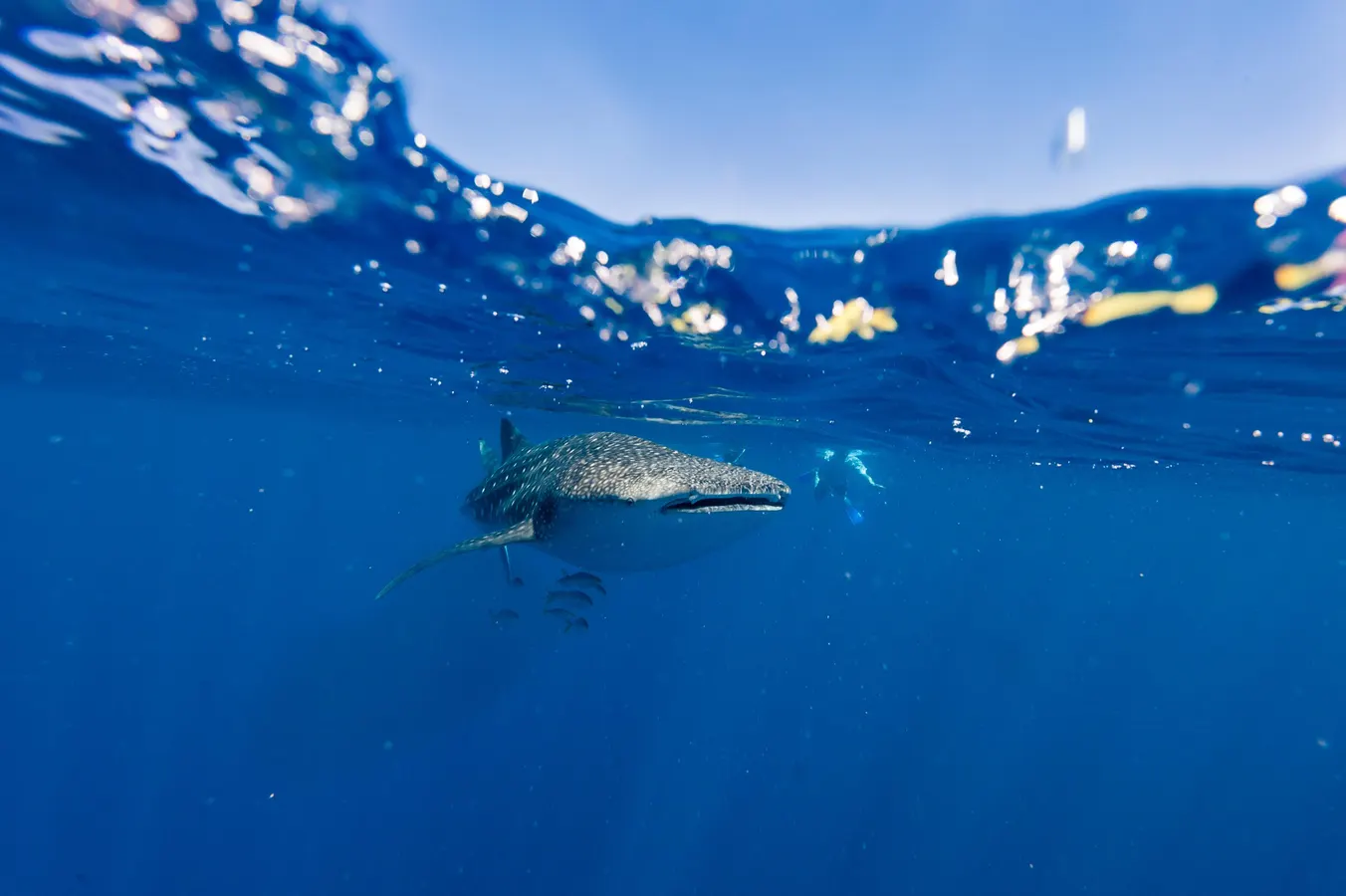By Contributor,Melissa Cristina Márquez
Copyright forbes

Aggregation sites like Al Shaheen are relatively small and predictable, making them vulnerable to human impacts. Overfishing, habitat disturbance, or changes in spawning behavior could disrupt this delicate system for whale sharks. Conversely, careful management and protection of such sites can safeguard both prey species and their predators, reinforcing the value of marine spatial planning in highly utilized areas like the Arabian Gulf.
Getty Images
On a warm morning off the coast of Qatar, the water shimmers in the sunlight. All is quiet, except the boat full of researchers who are scanning the surface. Looking for a moving constellation under the waves. Suddenly, there it was! A whale shark (Rhincodon typus), the gentle giant of the seas, gliding slowly through the floating trail of mackerel tuna eggs. A majestic sire, sure, but more importantly this individual was a moving puzzle they needed to solve. Their goal was to understand how these enormous, solitary creatures navigate their feeding grounds, and that meant attaching acoustic tags. The process is delicate and precise: using a long pole spear to attach a titanium dart with a short tether and an acoustic tag to the animal, just below the first dorsal fin. The tag would transmit signals to underwater receivers scattered across the area, silently recording the shark’s presence as it fed, moved with the currents, or rested at depth.
The open ocean can feel vast and empty, but in reality, beneath the surface, life is anything but uniform. Currents, temperature gradients, and nutrient-rich eddies create pockets of intense biological productivity, and marine animals from tiny plankton to apex predators are drawn to these ephemeral hotspots. For pelagic species like whale sharks, these aggregation sites are essential for survival. The Arabian Gulf off Qatar, a shallow, almost enclosed sea with temperatures ranging from 20°C in winter to 35°C in summer, is home to one of the world’s most unusual whale shark aggregations. Here, the sharks gather in a small, seasonal hotspot in the Al Shaheen oil and gas fields, feeding on the dense clouds of mackerel tuna eggs that appear between April and September. Acoustic receivers were placed both near platforms and in open water, allowing researchers to track the sharks’ movements and figure out whether they were drawn to the structures or simply following the floating bounty of fish eggs.
Station P1, near a connected two-platform structure, emerged as the heart of the sharks’ daily activity with more than 65% of all detections recorded here. Sharks were routinely detected on consecutive days, with some remaining for over a month, suggesting a strong seasonal residency. But why here? Likely because this platform sits adjacent to the primary tuna spawning grounds, rather than the platform itself being the draw. The tags illuminated that whale sharks moved with the currents during the day, drifting southeast along with the eggs, and then swimming back against the flow at night, returning to the start point. Peak feeding at the surface occurred in the morning hours, roughly 7 a.m. to noon, before the sharks descended to cooler depths, presumably to rest or digest. Even with the high mobility typical of whale sharks — sometimes traveling thousands of kilometers between feeding grounds — many individuals returned to this same patch each year, a behavior reminiscent of migratory fidelity seen in birds or sea turtles.
Whale sharks, Rhincodon typus, are typically solitary wanderers, traveling thousands of kilometers across the tropics and subtropics. Yet they are known to gather in around 30 global hotspots, called ‘constellations,’ where food availability peaks seasonally. These sites often coincide with spawning events of smaller fish or invertebrates, creating dense, energy-rich feeding opportunities that the sharks rely on to fuel their long-distance migrations.
MORE FOR YOU
Size and sex also influence shark behavior at Al Shaheen; the population is male-biased, with larger, mature sharks more resident than their smaller or juvenile counterparts. Females showed similar residency to males, suggesting that the benefits of accessing a rich, predictable food source outweigh any potential risks from social interactions (like unwanted courtship). This contrasts with other whale shark aggregation sites globally, where juveniles dominate or sexual segregation is more pronounced. And seasonal trends here were equally clear. While sharks were occasionally detected outside their normal season, the overwhelming majority of activity was concentrated during the spawning months, reinforcing the importance of predictable, dense prey patches in driving aggregation behavior.
Aggregation sites like Al Shaheen are tiny oases in a vast, otherwise unpredictable ocean. A place where whale sharks know they can reliably find food is a safe haven for these animals… but their predictability is also a double-edged sword. Because sharks and their prey are concentrated in a small area, any disturbance (whether overfishing of the spawning tuna, accidental collisions with vessels, or disruption from offshore construction) can ripple quickly through the ecosystem. A single shift in the timing or density of tuna eggs could force these gentle giants to travel farther or risk energy deficits during critical feeding months. Conversely, this concentration also offers a unique opportunity for conservation: by identifying and carefully managing these hotspots, authorities can protect not just the whale sharks but the entire web of life they depend on! In a region like the Arabian Gulf, where human activity is intense and marine spaces are highly utilized, such informed protection highlights the critical role of marine spatial planning. Safeguarding these ecological “anchors” ensures that predictable feeding grounds continue to sustain both predators and prey, maintaining a fragile rhythm that has existed for millennia.
Whale sharks are not just icons of the open ocean but sentinels of ecosystem health. Observing their movement patterns and site fidelity offers a window into the productivity and stability of marine food webs. The convergence of biology, oceanography, and even human infrastructure in the Arabian Gulf creates a natural laboratory, revealing the intricacies of predator-prey interactions and the fine balance that sustains the ocean’s giants. Protecting these constellations is more than just protecting whale sharks — it’s about safeguarding the pulse of the ocean itself for generations to come.
Editorial StandardsReprints & Permissions



